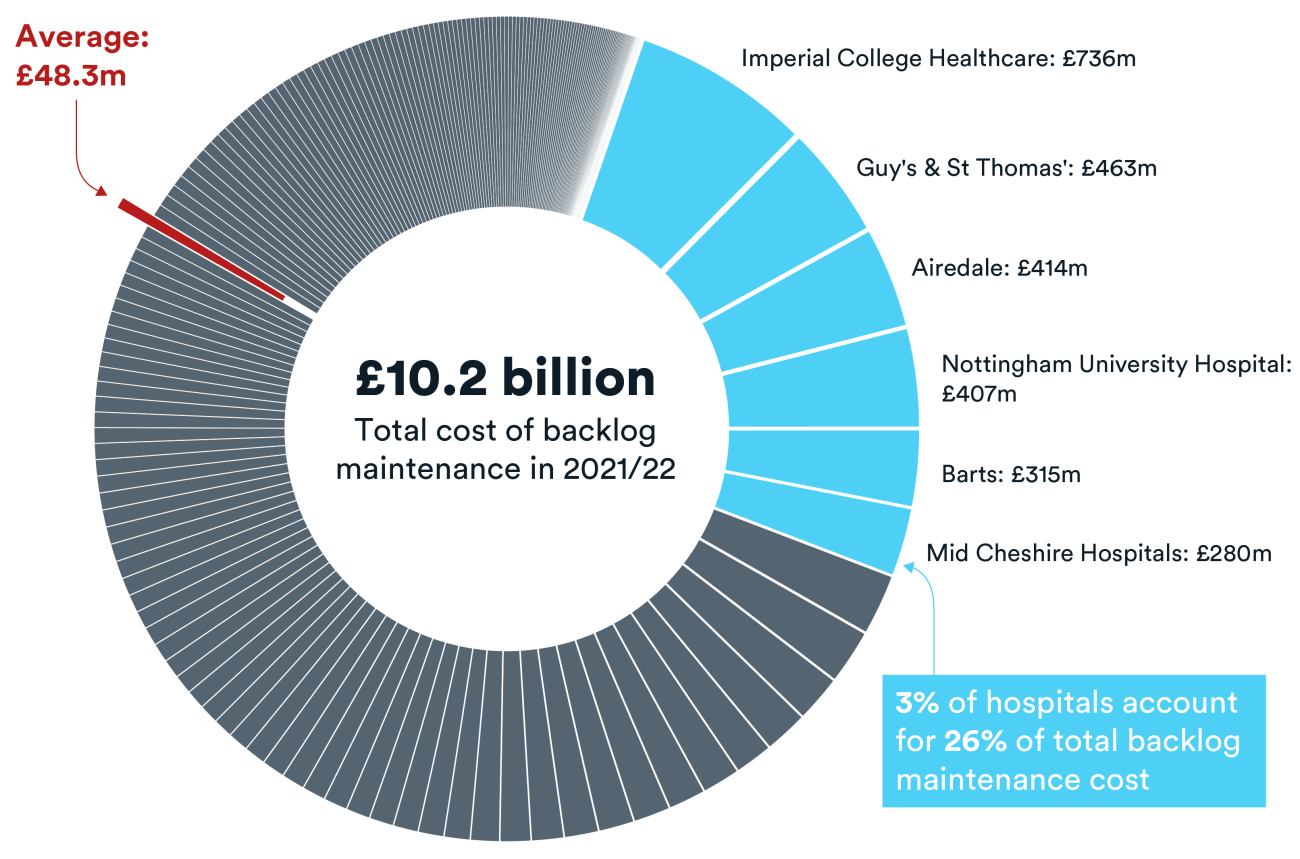Since 2004, the cost of fixing the backlog of maintenance – everything from leaky gutters to faulty lifts and the very fabric of hospital buildings – in the NHS in England has risen: from £4.5 billion to £10.2 billion in 2022 in real terms. This is an increase of 130%, and now represents 92% of the entire annual running costs for the whole of the NHS estate – and is a billion pounds more than the total capital spending plan for 2021/22.
Not all of the backlog maintenance is of equal importance of course, and ranges from “low” to “high” risk as assessed by trusts. The latest figures for 2021/22 reveal that while the cost of completing low-risk maintenance has fallen in real terms by 23% since 2004 (to £1.2 billion), the cost for high risk has risen by 256%, to £1.8 billion.
And just to be clear how “high risk” is defined, the guide for trusts in assessing their maintenance backlog states that: “High risk is where repairs/replacements must be addressed with urgent priority in order to prevent catastrophic failure, major disruption to clinical services or deficiencies in safety liable to cause serious injury or prosecution.”
Just over 80% of all trusts report some cost for high-risk backlog maintenance, ranging from just £2,800 to £368 million.
Virtually all trusts report some maintenance backlog cost (just three out of 212 report no costs). But costs vary considerably. While the average across all trusts is around £48 million, just six trusts (3%, as highlighted in the chart) account for just over a quarter of the total backlog.
In belt-tightening times, it is understandable that the maintenance of the fabric of the NHS is put off to defend front-line budgets. But as this backlog builds, the risk to the quality of services and the safety of patients and staff is becoming more acute.

